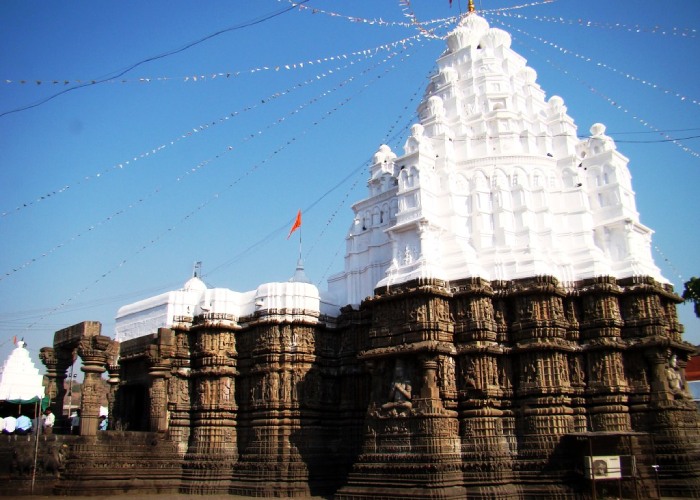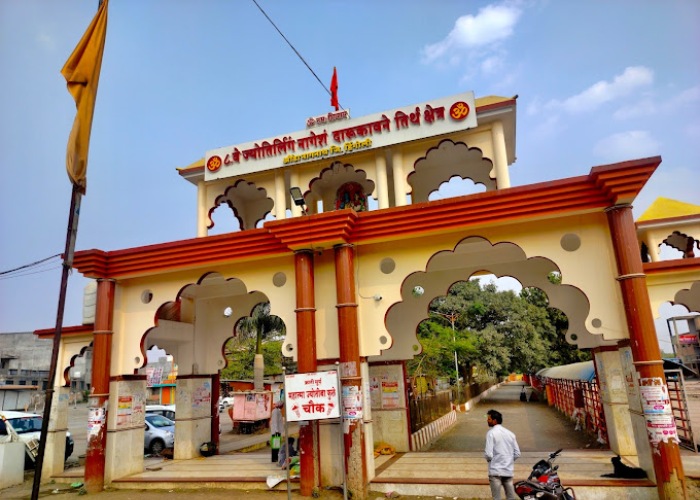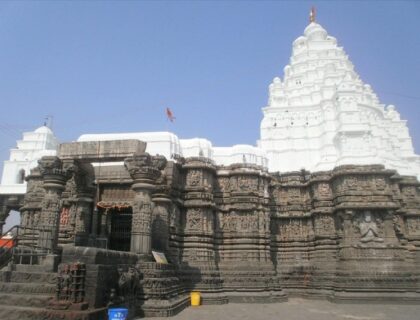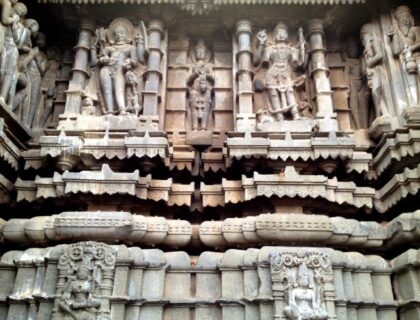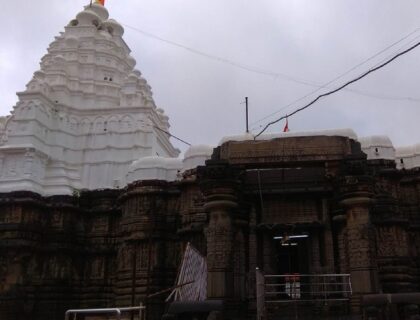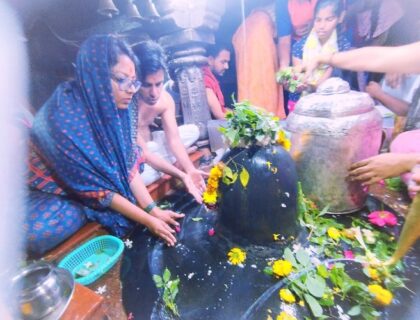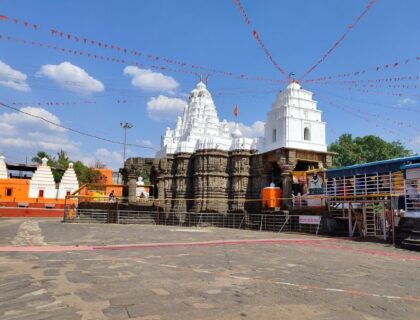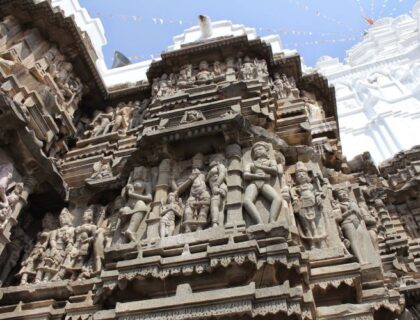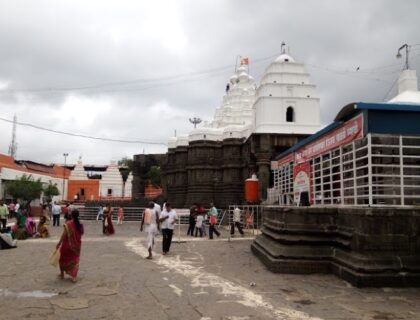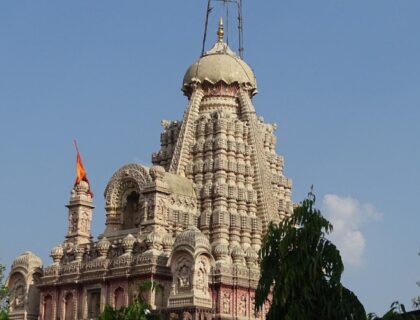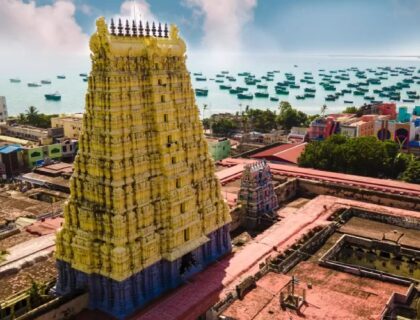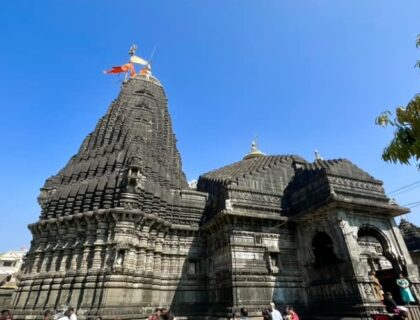Nageshwar Jyotirling Aundha Nagnath Temple
The Aundha Nagnath Temple Or Nageshwar Jyotirling (one of the 12 Jyotirlinga Temples) in Hingoli, Maharashtra, is dedicated to Lord Shiva, who is known as Lord Nagnath in this region. It is believed that Dharmraj (eldest of Pandav) constructed this beautiful temple while they were expelled for 14 years from Hastinapur.
It is widely held that the Nagesh Linga, or Jyotirlinga, is the Adhya, or the first Jyotirlinga on Earth. Devotees believe that praying at this temple can protect them from all types of poisons. Because of its association with snakes, many people believe that this Linga is extremely powerful and capable of neutralizing the harmful effects of all poisons. Many devotees have reported seeing snakes with open hoods guarding the Linga.
The Story Behind Nageshwar Jyotirling
Saint Namdev was an outstanding poet. He once travelled a long distance in search of a Guru. He arrived in Aundha Nagnath and met his Guru, Visoba Khechar. His Bhajan and Kirtana interfered with the pandits’ prayers and rituals. As a result, he shifted to the temple’s backside. Lord Shiva is said to have been moved by his melodious voice, and the entire temple was drawn towards him.
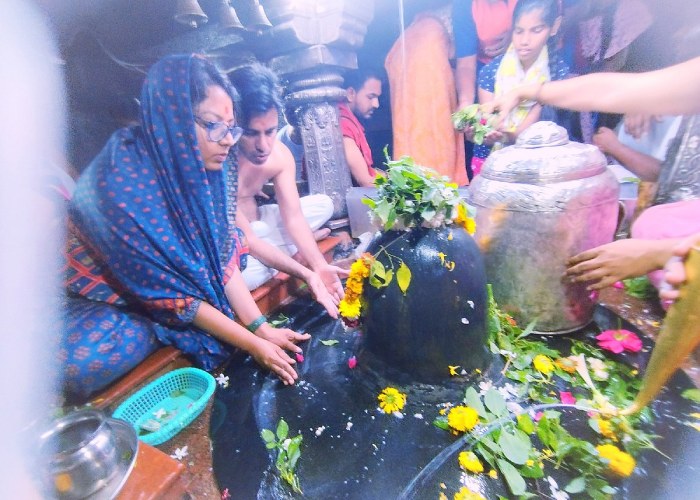
Since then, the temple has remained unchanged in his memory, but the cow Nandi has remained at the backside. It’s an interesting fact that the Nandi statue is always placed in front of the Jyotirlinga to direct people’s attention to God. Saint Namdev’s name appears in the great Sikhism book, Guru Granth Sahib. That is why Sikhs visit the Aundha Nagnath Jyotirlinga Maharashtra as well.
History of Nageshwar Jyotirling
The Yadavas of Devagiri well-established Honda Nagnath mandir, or Aundha Nagnath Temple, in the 13th century. Nonetheless, its origin is thought to be in the Pandava era, i.e. 3229 BCE. Lord Yudhisthira is mentioned in ancient texts as having built this supernatural structure during his 12-year exile with the other four Pandavas and their wife, Draupadi.

During the Mughal reign, many invaders attempted to destroy the temple, particularly Aurangzeb. However, it is stated in the associated storybooks that no one can completely destroy the temple. According to legend, a swarm of bees attacked the Mughal king and his men, who eventually gave up and failed in their attempt. The damage, however, had an impact on the structure of the Jyotirlinga, which was later repaired by Rani Ahalyabai Holkar, Queen of the Maratha Malwa Kingdom. Rani Ahalyabai rebuilt and renovated numerous temples that had been destroyed. As a result, a white statue of her has been erected outside the temple in her honour and glory.
The Architecture of Nageshwar Jyotirling
The temple has an area of 669.60 sq mt (7200 sq ft) and a height of 18.29 m (60 ft). The temple campus covers an area of approximately 60,000 square feet. Aside from its religious significance, the temple itself is worth seeing for its beautiful carvings. The current temple’s base is in Hemadpanti architecture, but its upper portion was repaired later and is in the style popular during the Peshwa’s reign.
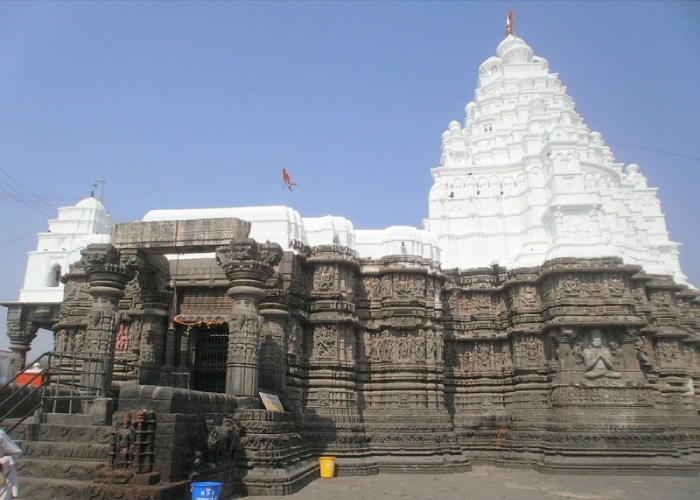
Due to its distance from the main road and ideal location for those seeking tranquillity, meditation, a break from daily activities, and a little hiking, the temple is a great choice. The Jyotirlinga is located below ground level and is reached via two steep steps. The premises of Aundha Nagnath also house 12 small temples for the 12 Jyotirlingas. There are also 108 temples and 68 shrines on the premises, all of which belong to Lord Shiva.

Important Facts Nageshwar Jyotirling
- The Aundha Nagnath Temple, located in Maharashtra’s Hingoli district, is one of the twelve Jyotirlinga temples.
- This temple was destroyed during Aurangzeb’s conquests. The present standing temple was rebuilt by Ahilyabai Holkar.
- It is a popular belief that the Nagesh Linga or the Jyotirlinga is the Adhya or the first Jyotirlinga on Earth. Devotees believe that by praying at this temple, one can protect themselves against all kinds of poisons.
- It is also believed that the Mughal Invader Aurangzeb tried to demolish the Aundha Nagnath temple. But it is told that a swarm of bees attacked his men, and Aurangzeb surrendered and left the temple.
- The temple is made in dry brick stone style. The present structure is in the form of an enclosure to protect it from attackers.
- The temple’s entrance is known as Ardha Mandapa or Mukha Mandapa, which is a half hall. It transports us to the main hall.
- The Jyotirlinga or Aundha Nagnath Shivling is located in the basement, and visitors must descend to worship the deity. The basement is known as the Sanctum Sanctorum.
- It is believed that people sing praises to Lord Shiva in the temple every day. The priests, on the other hand, complained that this was disrupting their routine.
- He was chased away. Because he was such a loyal devotee, the Lord directed the temple’s attention to him, and the priests left him behind the temple.
- The entire temple had rotated, and the directions of the lingam and Nandi were different from the other temples.
Best Time to Visit Nageshwar Jyotirling
This place is very heavenly and spiritual, and you can visit it all year. The best time to visit this temple, however, is during the monsoon and winter seasons. During the monsoon season, this location receives moderate to heavy rainfall, making it appear heavenly with its greenery and bringing freshness elsewhere.
Famous Festivals In Nageshwar Jyotirling
- Dussehra – Dussehra, also known as Vijayadashmi, is celebrated on the tenth day after Navaratri to commemorate the triumph of good over evil.
- Shravana: For happiness and wealth, many fasts, offerings, and mantras are performed during the fifth month of the Hindu calendar, known as Shravana.
- Mahashivaratri is a fasting ritual that takes place in the last week of February. It is reminiscent of Lord Shiva bringing Goddess Parvati with him. A Grand Celebration is arranged by priests and the temple committee.
How to Reach Nageshwar Jyotirling
By Air: The nearest airport is in Nanded which is 105 km from the Parli Vaijnath.
By Rail: The nearest station is Parli, which is 2 kilometres away from Parli Vaijnath. Take trains to Hingoli railway station from connected junctions or book tickets for the nearest station, Parbhani, which is 50 km from the Aundha Nagnath temple.
By Road: Buses run from Aurangabad, Mumbai, Pune, Nagpur, and other nearby cities runs on regular intervals.
Also Read – Trimbakeshwar Jyotirling
Location
Facilities
- Drinking Water
- Pooja Item Shops
- Prasad Shops
- Resting Room

